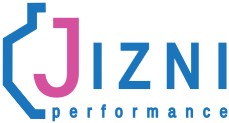No products
Manufacturers
Categories
- AK-47 Pattern Rifles
- AR-15 Accessories
- Beretta Accessories
- Canik Accessories
- CZ Accessories
- CZ P-07 & Duty
- CZ P-09
- CZ P-10 Series
- CZ Shadow 1
- CZ Shadow 2
- CZ Shadow 2 Compact
- Competition rigs (Shadow 2 Compact)
- Holsters (Shadow 2 Compact)
- Magazine pouches (Shadow 2 Compact)
- Sights (Shadow 2 Compact)
- Optic Mounts (Shadow 2 Compact)
- Grips (Shadow 2 Compact)
- Service Parts (Shadow 2 Compact)
- Magazine Wells (Shadow 2 Compact)
- Performance Parts (Shadow 2 Compact)
- Magazines (Shadow 2 Compact)
- P-01 / Compact
- P-01 Omega
- CZ 75 B
- CZ 85
- CZ 75 Tactical Sport
- CZ Scorpion
- Older CZ 75 (Pre-B)
- CZ 97 B
- CZ Branded Items
- Glock Accessories
- GLOCK Gen 1 - 3
- Holsters (Glock)
- Magazine Pouches (Glock)
- Competition rigs (Glock)
- Magazines (Glock)
- Performance Parts (Gen 3)
- Sights (Glock)
- Optic Mounts (Glock Gen 3)
- Lights / lasers (Glock)
- Spare Parts (Gen 3)
- Tools (Glock)
- Carbine Conversions (Gen 3)
- Grip Enhancements (Glock)
- Magazine Wells (Gen 3)
- Magazine Bases (Gen 3)
- GLOCK Gen 4
- Holsters (Glock)
- Magazine Pouches (Glock)
- Competition rigs (Glock)
- Sights (Gen4)
- Optic Mounts (Glock)
- Lights / lasers (Glock)
- Performance Parts (Glock Gen 4)
- Magazine Wells (Gen 4)
- Magazines (Glock)
- Magazine Bases (Gen 4)
- Tools (Glock)
- Spare parts (Glock Gen 4)
- Grip Enhancements (Glock)
- Carbine Conversions (Glock)
- GLOCK Gen 5
- Glock Slimline
- Holsters (Glock Slimline)
- Magazine Pouches (Glock Slimline)
- Magazines (Glock Slimline)
- Magazine Bases (Slimline)
- Performance Parts (Glock Slimline)
- Sights (Glock Slimline)
- Lights / lasers (Glock Slimline)
- Tools (Glock)
- Grip Enhancements (Glock Slimline)
- Optic Mounts (Slimline)
- Spare parts (Glock Slimline)
- Glock Branded Items
- GLOCK Gen 1 - 3
- Sig Sauer Accessories
- Smith & Wesson Accessories
- 1911 Accessories
- Vektor Accessories
- Long guns (rifle / shotgun)
- Lights and Lasers
- Gun Belts
- Gun Slings
- Training Aids
- Range Time
- Gun Care
- Reloading
- Miscellaneous
- Featured Products
- Tools
- End of line specials.
- Grand Power
- Optical Sights
The Seventh Law of Systems Thinking
Feedback loops
Along with flows and levels, time delays are a crucial part of system behaviour. Since we are now fully into load-shedding again, let's use a portable generator as an example. The speed of the generator is managed by a governor. If I turn the kettle on, the revs drop. The governor acts as a feedback loop, opening up the air-fuel supply and the generator recovers speed. During steady use, a generator (mine at least) also "hunts" a bit. It speeds up, the governor cuts in, it slows down again. You get this RRRRR-rrrrrrrr-RRRRR-rrrrrrr cycle. If the governor is defective; if the feedback loop is even slower, the engine dies or runs away totally and self destruct.
"Underlying all of the above problems is a fundamental characteristic of complex human systems: cause and effect are not close in time and space. By “effects,” I mean the obvious symptoms that indicate that there are problems—drug abuse, unemployment, starving children, falling orders, and sagging profits. By “cause” I mean the interaction of the underlying system that is most responsible for generating the symptoms. Why is this a problem? Because most of us assume they are—most of us assume..."
Peter Senge - The Fifth Discipline
Most of us assume that if we drastically reduce the number of licensed firearms in the system, the number of illegal guns will also be drastically reduced. In reality, there will be significant delays in the system. These delays will create short-term imbalances that might never be overcome.
Cause and effect are not closely related in space and time
Yes, it will cut off the flow of licensed firearms into criminal hands, but that will only have a significant effect on the level of illegal firearms years from now. In the meantime, the balancing loop created by law-abiding, armed citizens will be stopped. This will increase the attractiveness of crime for criminals, and more people will flow towards crime. The level of general crime will increase.
Crime, as a subsystem of society, creates a reinforcing loop: Higher levels of crime leads to increased levels of poverty, resulting in more people flowing into crime. Violent crime, as a subsystem of crime, will see more criminals flowing into the system. All our hope will be penned on the type of crime. We can probably not expect violent criminals to flow away from violent crime towards less violent crime, though. The best that we can hope for is fewer non-violent criminals flowing towards violent crime. So, even if it works, it will only show up with the next generation of criminals.
Systems considerations
Linear thinking teaches us that fewer guns in society will lead to lower levels of gun violence. Systems theory teaches us that the flows of licensed firearms, illegal firearms, non-violent criminals and eventually violent criminals will all happen at their own pace, creating different levels of each along the way. And these levels will divert the flows in ways that may see us never reaching the end state envisioned by linear thinking.
So it is important to focus on long-term goals, but critical to navigate the correct route there.



